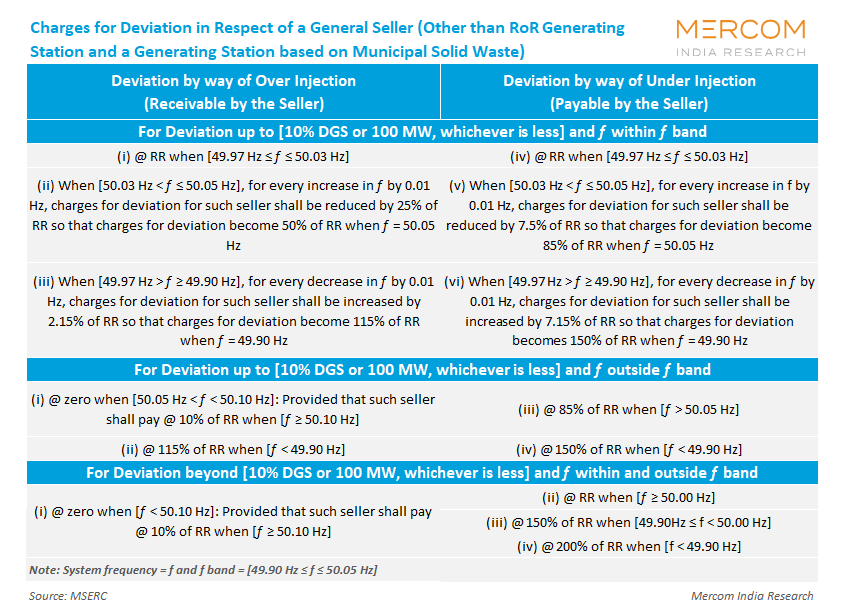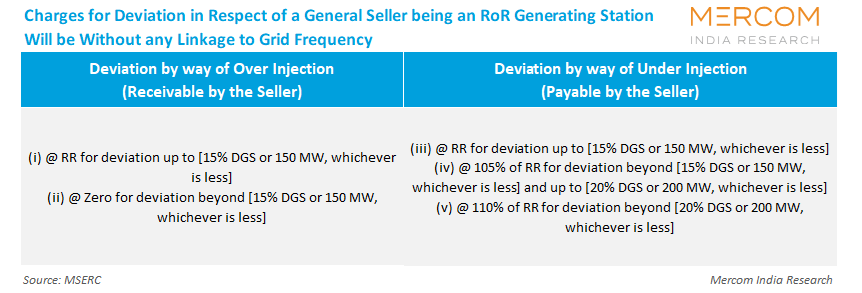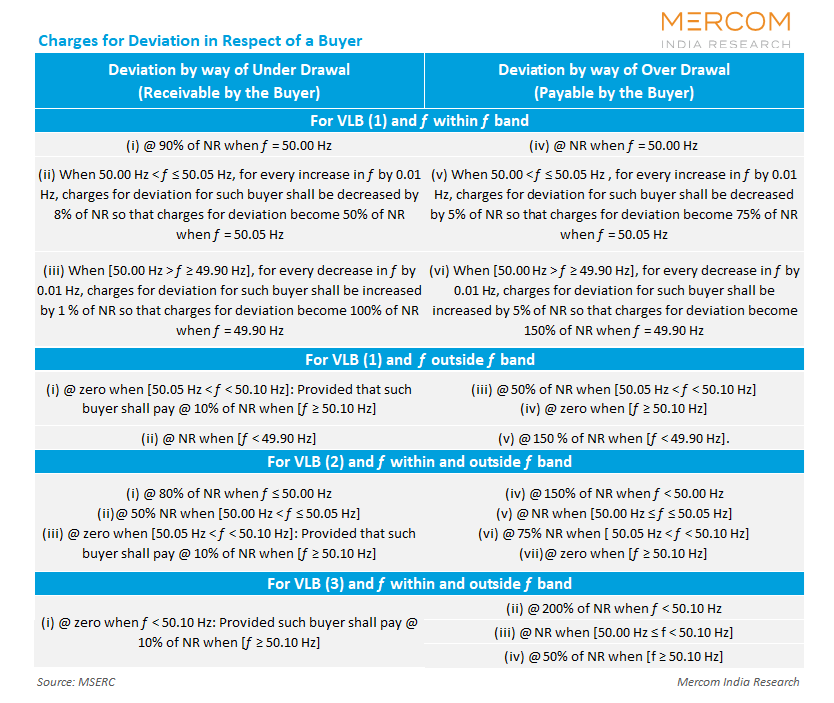Meghalaya Electricity Regulator Issues Deviation Settlement Mechanism Rules
The deviation charges will be nil if the grid frequency exceeds 50.05 Hz
November 17, 2025
Follow Mercom India on WhatsApp for exclusive updates on clean energy news and insights
The Meghalaya State Electricity Regulatory Commission (MSERC) has issued the Intrastate Deviation Settlement Mechanism and Related Matters Regulations, 2025, in an effort to enhance grid stability.
The regulations will apply to all generating stations owned by Meghalaya Power Generation Corporation or any other intrastate generating stations.
They will apply to renewable energy projects of at least 5 MW capacity that have signed short-term and medium-term power supply agreements with DISCOMs within the state or outside it.
All renewable energy-based power projects/compressed biogas projects that sell power to distribution companies (DISCOM) within the state or outside it under short-term contracts will also fall under the ambit of these regulations. The power being sold to DISCOMs may be sold directly through electricity traders or through exchanges.
The regulations also apply to DISCOMs and open access consumers, and those consuming from captive power projects, who intend to purchase/receive power through the state grid.
Computation of Deviation
A deviation in a time block for general sellers will be computed as follows:
Deviation-general Seller (DGS) (in MWh) = [(Actual injection in MWh) – (Scheduled generation in MWh)].
Deviation-general Seller (DGS) (in %) = 100 x [(Actual injection in MWh) – (Scheduled generation in MWh)] / [(Scheduled generation in MWh)].
A deviation in a time block for wind-solar (WS) sellers will be computed as follows:
(a) For the period from the date of commencement of these regulations to March 31, 2026:
Deviation-WS seller (DWS) (in MWh) = [(Actual Injection in MWh) – (Scheduled generation in MWh)];
Deviation-WS seller (DWS) (in %) = 100 x [(Actual Injection in MWh) – (Scheduled generation in MWh)] / [(Available Capacity)];
(b) For the period from April 1, 2026:
Deviation-WS seller (DWS) (in MWh) = [(Actual Injection in MWh) – (Scheduled generation in MWh)];
Deviation-WS seller (DWS) (in %) = 100 x [(Actual Injection in MWh) – (Scheduled generation in MWh)] / [(X% of Available Capacity) + (100-X) % of Scheduled Generation):
The X’ will be determined by the Commission through separate orders after public consultation.
Deviation in a time block for buyers will be computed as follows:
Deviation – Buyer (DBUY) (in MWh) = [(Actual drawal in MWh) – (Scheduled drawal in MWh)]. Deviation – Buyer (DBUY) (in %) = 100 x [(Actual drawal in MWh) – (Total Scheduled drawal in MWh)] / [(Scheduled drawal in MWh)].
Charges for Deviation
Charges for deviation, in respect of a general seller (other than RoR generating station and a generating station based on municipal solid waste) will be as under:
Deviation charges, in respect of a general seller being a RoR generating station, without any linkage to grid frequency, are as follows:
Charges for deviation, in respect of a general seller being a generating station based on municipal solid waste and without any linkage to grid frequency, will be as under:
Charges for deviation, in respect of a WS Seller, including such generating stations aggregated at a pooling station through a qualified coordinating agency, will be as follows:
In cases where multiple WS generators are aggregated at a pooling station through a QCA, the contract rate for deviation will be determined as the weighted average of the contract rates of all WS sellers opting for aggregation at the pooling station.
The available capacity will be calculated as the cumulative capacity rating of wind turbines or solar inverters that are capable of generating power in a given time block.
The de-pooling of deviation charges among WS sellers connected to the pooling station will be carried out based on a methodology mutually agreed upon between the QCA and the individual sellers.
For standalone energy storage systems (ESS), deviation charges will be the same as those applicable to general sellers, excluding run-of-river generating stations and those based on municipal solid waste.
When the ESS is in charging mode, any overdrawal from the grid will be treated as under-injection, while underdrawal will be treated as over-injection, with deviation charges settled accordingly.
In the case of an ESS being a standalone pumped hydro storage project, the deviation charges and the formula for computation during the charging period will be aligned with those applicable to a WS seller being a generating station based on solar sources. This provision will remain effective from the commencement of these regulations until March 31, 2026.
- For WS generators with ESS connected at the same interconnection point, the deviation charges can be one of the following:
Deviation charges applicable to the WS generator category during periods when the solar, wind, or hybrid generating station is injecting power. - Deviation charges applicable will be equivalent to charges applicable to the ESS is injecting power
- Deviation charges applicable to a standalone ESS for drawal by BESS based on the scheduled drawal from the grid.
Each generator and ESS must be equipped with a special energy meter to capture individual actual injection and drawal data accurately.
Charges for deviation, in respect of a buyer, will be receivable or payable as follows:
Charges for the injection of infirm power will be zero, except in the cases specified under a general seller being a RoR generating station, and a general seller being a generating station based on municipal solid waste.
If infirm power continues to be scheduled after the successful completion of the trial run, deviation charges for any variation from the scheduled infirm power will be as applicable for a general seller.
When the system frequency exceeds 50.05 Hz, the charges for the injection of infirm power or for the deviation of scheduled infirm power after the trial run due to over-injection by a general seller will be zero.
Deviation charges for drawal of start-up power before the commercial operation date of a generating unit, or for drawal of power to run auxiliaries during the shutdown of a generating station, will be payable at the reference charge rate or the contract rate.
In the absence of either, the rate will be determined based on the weighted average area clearing price of the Day-Ahead Market segments across all power exchanges for the respective time block.
In the event of a forced or partial outage of a seller, deviation charges will be levied at the reference charge rate for a maximum of eight time blocks or until the seller’s schedule is revised, whichever occurs earlier.
For cases involving multiple contracts, the applicable contract rate or reference rate will be the weighted average of all such contract or reference rates. Sellers and buyers must submit power purchase agreement rates to the State Load Despatch Centre on affidavit for the preparation of deviation charge accounts.
Treatment of Gaming
The Commission may, either on its own initiative or on a petition filed by SLDC, initiate proceedings against any seller or buyer on charges of gaming, and if required, may order an inquiry to be made by an officer of the Commission regarding such a seller or buyer as deemed fit.
If the Commission proves in its inquiry that any seller or buyer has indulged in gaming, it may disallow any charges for deviation to such seller or buyer during the period of such gaming.
In the event of persistent indulgence in gaming by any seller or buyer, the Commission may debar the buyer or seller from open access for a period determined by the Commission.
Energy Settlement and Accounting
The consumer’s scheduled drawal is calculated after adjusting for grid losses, and any difference between the scheduled and the actual consumption will be settled under DSM regulations.
The excess energy consumed will be deemed to have been drawn from the State grid and will be treated as a deviation.
The consumer will pay for the excess energy consumed at the applicable DSM charge, which will be calculated in accordance with this Regulation.
If a consumer’s drawal is below the scheduled drawal, the DSM charge will be calculated in accordance with this regulation.
Energy Settlement for a Multi-source Consumer
A multi-source consumer must have separate supply agreements with both DISCOMs and with the sellers.
For every 15-minute time block, the total scheduled drawal at the consumer’s drawal point will be calculated based on the contract demand (in MVA) with the distribution licensee, and the drawal schedule through open access, after adjusting for losses in the intra-state transmission and/or distribution network.
When a consumer draws power simultaneously from open access and the DISCOM, the actual drawal will first be adjusted against the power scheduled through open access. Any remaining drawal will be consumed by DISCOM and billed as per the tariff order approved by the state electricity commission.
If the actual drawal exceeds the scheduled open access power but remains within the contracted demand, the applicable rate will be the higher of the DSM rate or the energy charge rate set by the commission.
If the drawal is lower than the schedule, the DSM rate will apply.
In cases where the actual drawal exceeds both the scheduled power and the contracted demand, the excess energy beyond the contract demand will be billed under the penalty provisions specified in the Electricity Supply Code.
For multi-source consumers availing power from sources other than solar, energy charges will be levied by the distribution licensee based on the total actual energy consumed during the billing month, after deducting the energy scheduled under open access.
Payment of DSM Charges
The state will issue the deviation settlement mechanism and accounting charges to all sellers/buyers annually.
In the event of a delay in payments for charges due to deviation, state grid users are required to pay simple interest at a rate of 0.04% per day of delay.
If sellers/buyers fail to make payments of charges for deviations within the previous quarter, they will be required to open a letter of credit equal to 110% of their average payable weekly/monthly liability for deviations in the prior quarter of the year.
If sellers/buyers fail to make payments of charges for deviation within the current quarter, they will be required to open a letter odd credit equal to 110% of their average payable weekly/monthly liability for deviations in the previous quarter of the year.
Subscribe to Mercom’s real-time Regulatory Updates to ensure you don’t miss any critical updates from the renewable industry.





